If you've ever baked a batch of blueberry muffins and noticed the blueberries seemed to turn green, instead of purple or blue, that's normal! Keep reading to find out out why blueberries turn green in your muffins and baked goods!
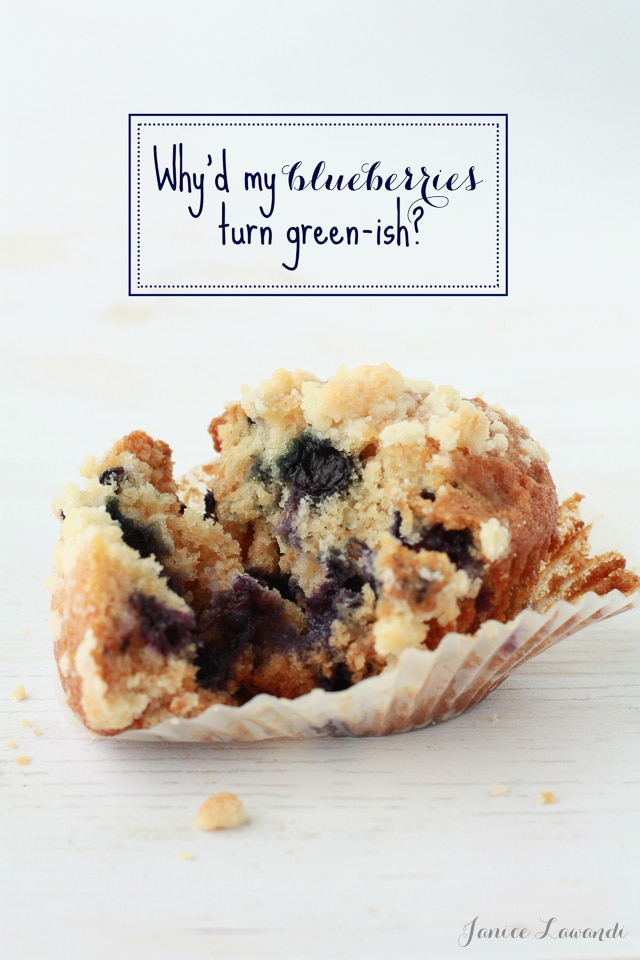
It happens even to the best of them, moist and sweet honey blueberry muffins, made with care and love, but that end up with unsightly green blobs of what should have been pretty purplish blueberries. The taste is the same, but the colour of the blueberries wasn't expected. That, my friends, is anthocyanin's fault. But actually, to be more precise, the pH of the muffin batter also has a role in this story.
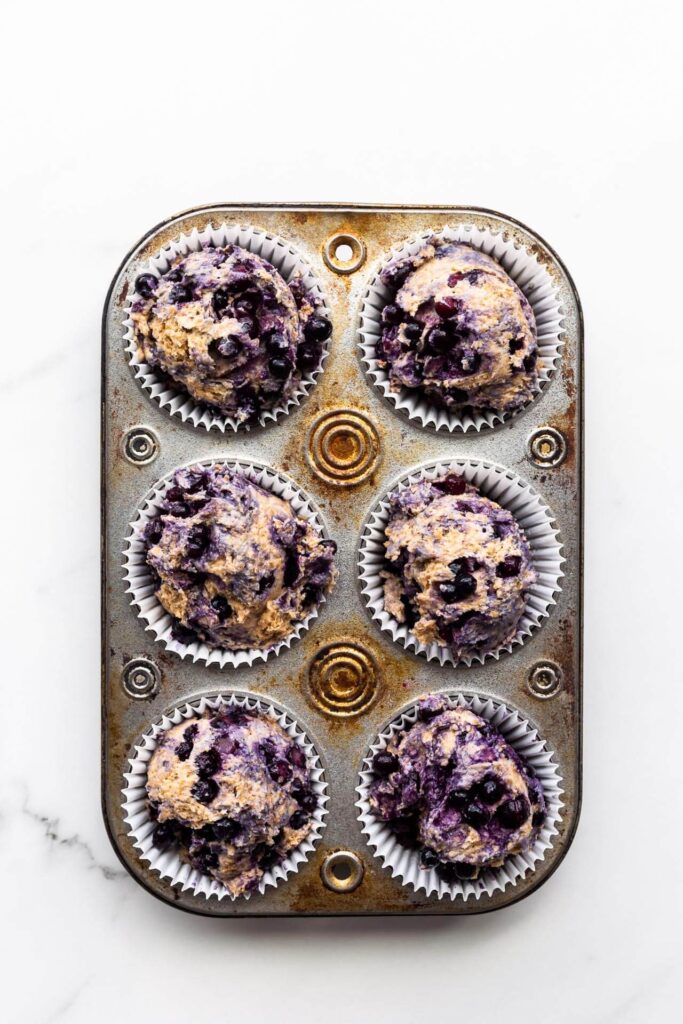
What is anthocyanin?
I guess I should actually say "anthocyanins," plural because actually anthocyanins are a family of similar compounds. They are the antioxidants in plants, like leaves and berries, and they are responsible for much of the colour you see on the tables at the farmer's markets, from red cabbage and purple corn to many different types of berries, cherries, and grapes. The anthocyanins are not to be confused with the carotenoids (like beta-carotene): carrots get their orange colour (and even purple colour) from beta-carotene, while blueberries get their violet-blue tones from cyanidin 3-glucoside (an anthocyanin).
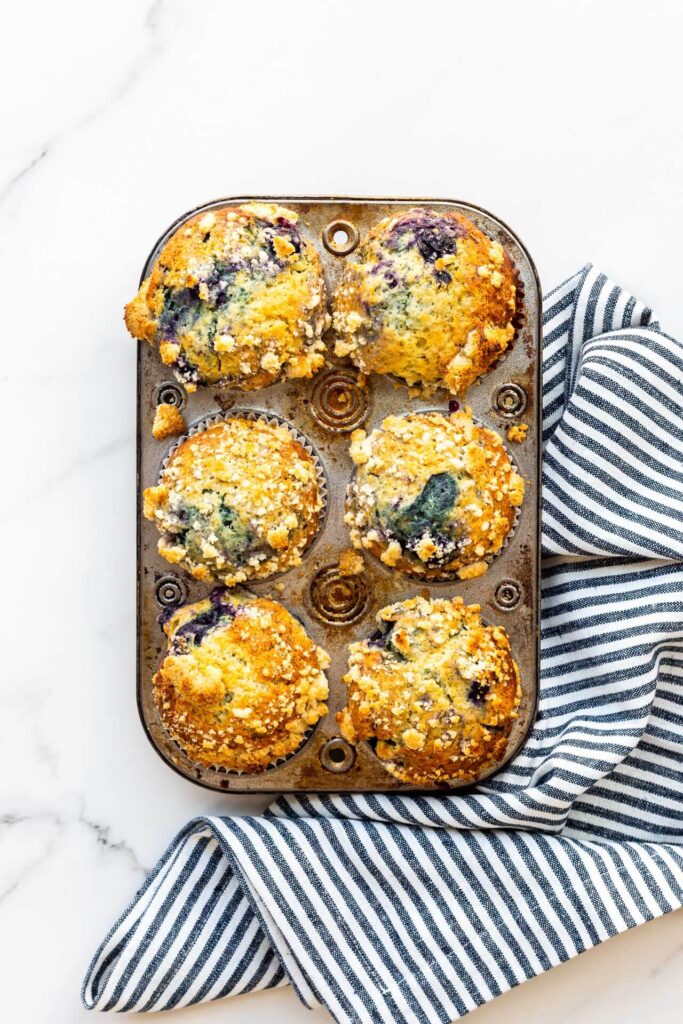
Why do anthocyanins change colour?
Anthocyanins are actually really good pH indicators: they change colour depending on if they are in an acidic, neutral, or basic (alkaline) environment. The colour changes observed vary from one anthocyanin to another, but for cyanidin 3-glucoside, the anthocyanin found in blueberries, the colour varies from red to violet to blue or even green (from low, acidic pH to higher, alkaline pH). A change in pH entails a small change in the structure of anthocyanins, like cyanidin 3-glucoside, thereby affecting how anthocyanins absorb/reflect light rays: they change colours.
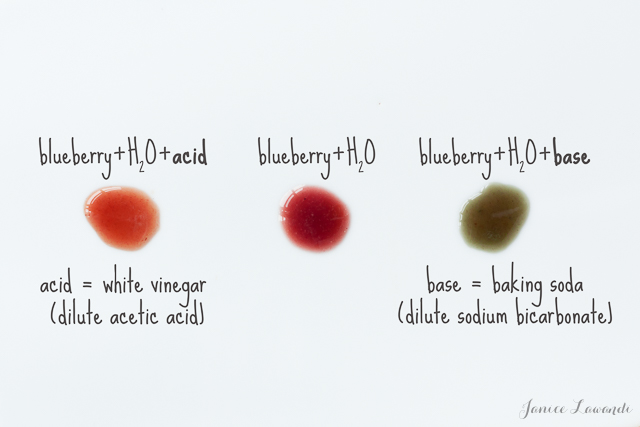
What do anthocyanins have to do with the colour of the blueberries in my muffins?
The answer is easy: does your recipe have a lot of baking soda, a chemical leavener that you might add to muffin batter with the hopes of giving those muffins lots of oomph and rising powder? When you bake with baking soda, your recipe will also have an acidic ingredient (or two) to react with. If there aren't enough acidic ingredients in your recipe to balance out that alkaline baking soda, then your muffin batter will be basic (alkaline): your blueberry muffins will probably have splotches of green berries, instead of violet, because the blueberries turn green under basic conditions.
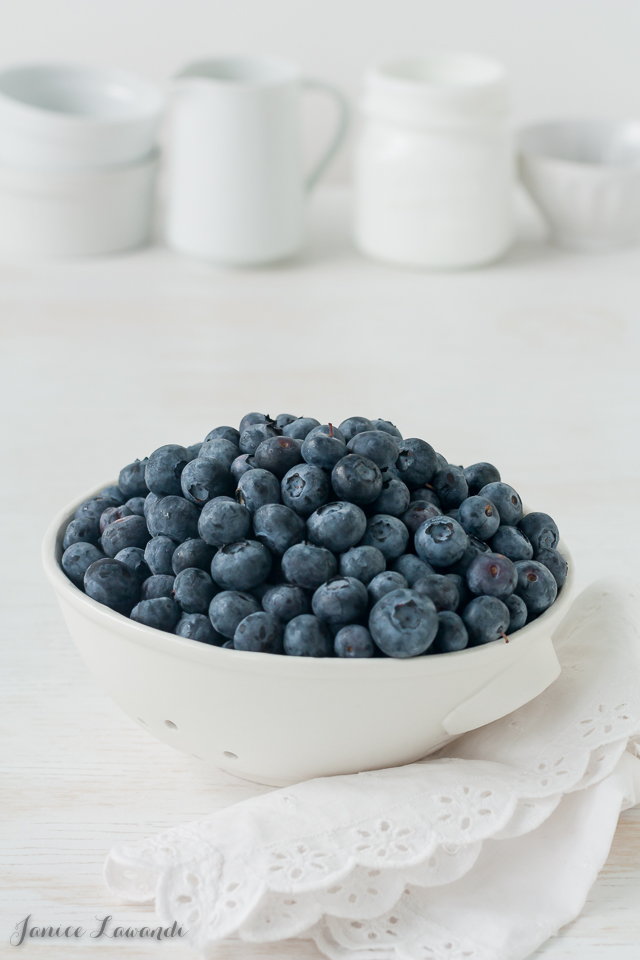
If your favourite blueberry muffin recipe yields the best muffins you've ever tasted, but the blueberries end up an unfortunate green, know that it's not the end of the world, but if that green colour bothers you, make a note. In the next batch, consider adding in a little extra vinegar (or buttermilk, or whatever acid that is called for in the recipe) to balance out the extra baking soda, or you could even use a touch less baking soda in the next recipe, and add more baking powder instead.

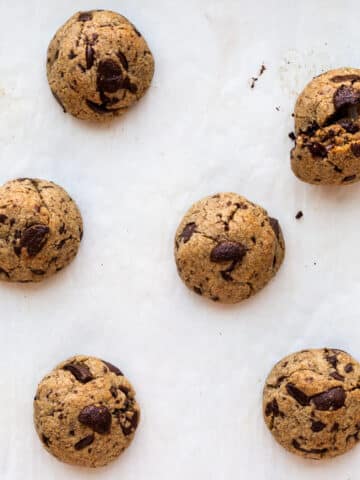
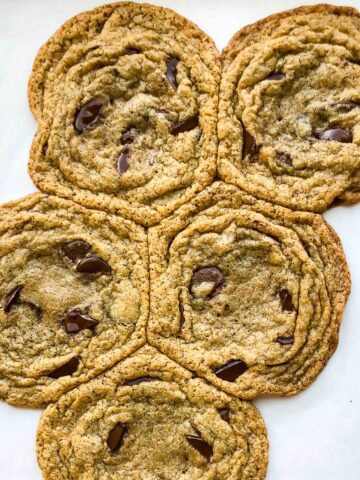
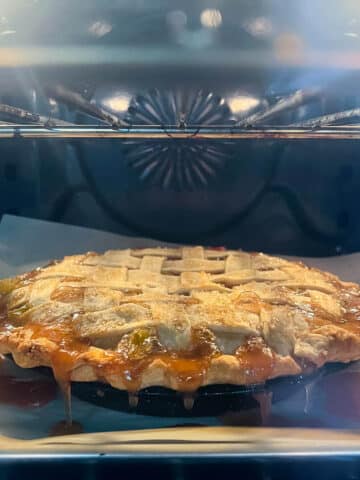
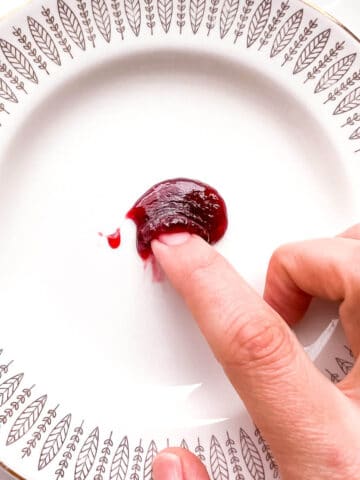
Mark says
I make a blueberry cake. The recipe calls for 2 tsps of baking powder and not baking soda. The last few years since I have been making it, it turns green. It never use to happen before. I use the same amount of baking powder that I use to use. So, why is the blueberry cake turning green?
Janice says
Hi Mark,
That's really interesting. Have you tried buying a new package of baking powder or using a different brand? Because if the blueberries are suddenly turning green, it really is an indicator the pH of the cake batter is now higher (more basic) than it was before. Perhaps the baking powder formulation has changed, although I'd expect the product manufacturer to put more acid than baking soda in the formula to drive the reaction forward when the time comes...
x says
Lemon should help, I assume, vinegar for a cake might be too harsh. Not?
Chris says
This is lovely. I appreciate the detail and specifics, as I had recently started baking blueberry muffins and observed a rich red color, wondering what caused it. This post helped me understand what's going on, and beyond that, helped me understand how to adjust ingredients in the future when I start developing my own recipes. I have a scientific, analytical mindset, and love being able to use the knowledge I've gained from this post to use actual science in my cooking.
Thank you for this post and all its detail. More like this, please!
Annie says
Thanks for the information, I had the same thing happen to my white raspberry cake where there were small specs of blue. It certainly wasn't mold and I was afraid to serve it. Was this the same reasoning?
Heidi says
I made muffins some with blueberries and some with only chocolate chips and they all turned green! But not just near the blueberries, the whole muffin! I used almond meal, walnuts, and spices, yes there was baking soda in the batter-but I have made a similar recipe in the past with only chocolate chips and they were a normal color. Could the blueberry "essence" pass through the air and into the muffins without blueberries? Or could the muffin tin turn them green? It was so weird, I threw them out even though they tasted normal.
John Stois says
Does the same color change happen with pumpkin for those reasons? My pumpkin pie turned a shade of green .It was pumpkin color when i put it in the oven but turned a shade of green when I pulled it out. I almost threw it out but i tried a taste and it was delicious.
Dave says
So, does it kill you if you eat it? I mean.. I don't want to have cyanide in my cake.
Janice says
Hi Dave,
Cyanide is not at all the same as anthocyanins, and the anthocyanins found in blueberries certainly won't kill you (I think the human body just metabolizes and excretes them). No worries!
Vina says
Thank you for explaining the reason for the color change! My favorite cookie to bake is raspberry white chocolate and always turn green. The green with the red raspberries makes for a perfect Christmas cookie, but I've gotten used to people asking "why are they green?" and now I have an answer!
Stephanie says
ooooh so interesting! The muffin recipe I use doesn't turn green, but I've had some very good cake-like versions of the blueberry muffins where I pondered the greenish blobs (briefly.. before shoving the whole muffin in my mouth, because I'm a lady)
Mallory @ Because I Like Chocolate says
You have made this all sound so simple! I love these posts when you take your chemistry background and apply it to food and cooking. It's something different from what the rest of the food blogging world is doing and I find it quite refreshing!